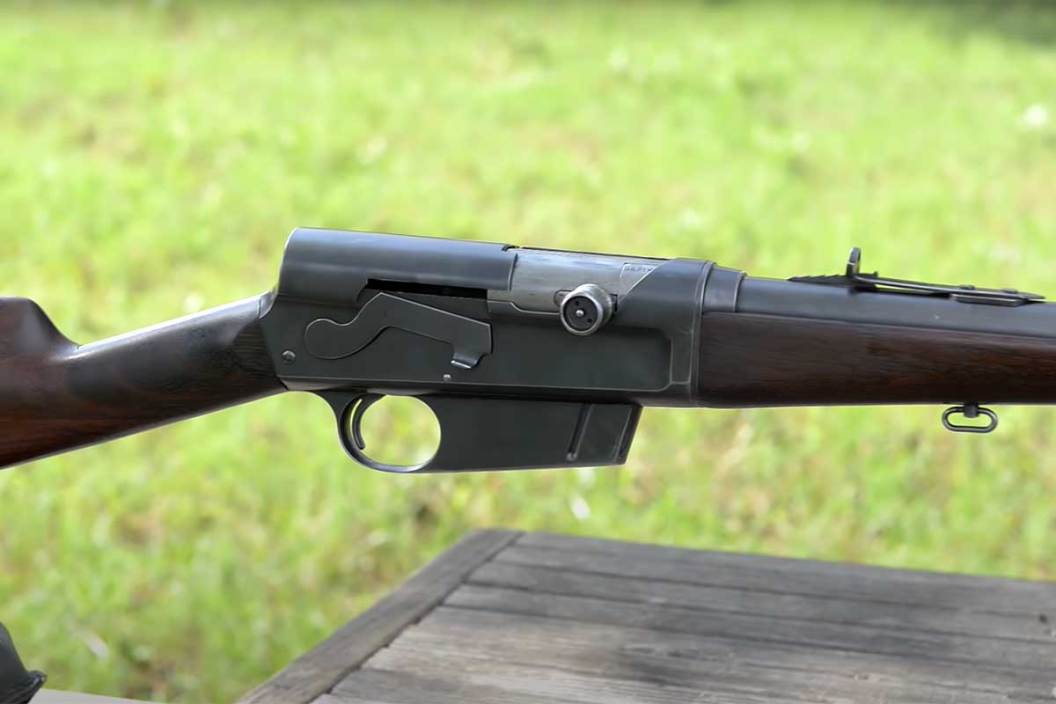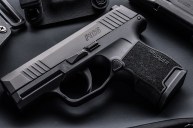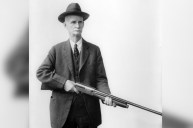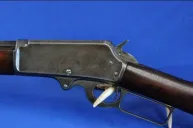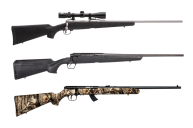These rifles broke the bolt-action ceiling for soldiers and hunters.
While some people still think of semi-automatic rifles as newer designs, the fact is the earliest successful semi-auto rifles are over a century old at this point.
These are some of the best historic semi-automatic rifles that broke the bolt action ceiling for militaries and hunters.
M1 Garand and M14
This was the first semi-automatic rifle adopted by the U.S. military, just in time for World War II. Chambered for the powerful .30-06 Springfield and firing from a unique 8-round en-bloc clip, the M1 Garand was noted for its long-range accuracy with iron sights. It marked the pinnacle of the battle rifle, which could best be described as semi-auto rifles in powerful calibers capable of engaging enemies in mid to long ranges with rapid or aimed fire. It allowed for much quicker follow-up shots than a bolt gun while still being capable of long-range shooting, while also possessing extreme durability.
The M1 was an odd design as far as semi-autos go, which was not a functional necessity, but the result of a questionable decision by the military brass of the time. The autoloading M1 was originally designed to use 20-round M1918 BAR magazines—but the decision makers claimed that these mags would be too easily lost in the field and would encourage soldiers to waste ammunition in a semi-auto rifle—even though neither issue was a problem with the BAR, which was select fire.
Progress can be sluggish when it comes to adopting new weapons technology, especially when you're talking about the U.S. military. But, they still wanted troops to be able to reload the rifle quickly with something more reliable than stripper clips, which were difficult to use in combat and could easily become bent and bind up the works.
The result was the disposable en-bloc clip. It held eight staggered cartridges the way they would be held in the body of a box magazine. Essentially, it was the top half of the gun's magazine. The spring and follower that pushed the rounds into the action were integral to the firearm. When the en-bloc was loaded from the top, the cartridges were put under tension, the top and bottom halves came together, and the magazine was complete. When the last round in the clip was fired, it was ejected by a spring and the action locked open, ready for a fresh clip. It was a fair compromise that, with some training, worked very well.
While some folks still favored the Garand in the decades after it was replaced by the M14 (and later the M16), it's a heavy rifle for what it offers and, based on other firearm advancements, it was obsolete even for civilians rather quickly. Though there are obvious hunting applications, and the .30-06 is a fantastic hunting round, it rapidly began to lose some of its luster. It was also difficult to sporterize, meaning there were plenty of affordable bolt-action rifles and even some semi-autos coming out that were far more practical for big game hunting and deer hunting.
The M14 was an evolution of the Garand and was meant to replace a host of military firearms, due to the fact that it was select fire. But, it wasn't to be, and the M16 was far better suited to the modern battlefield. However, the M14 lived on as a dedicated marksman rifle and a sniper rifle for many years in the military. The Springfield M1A is available on the civilian market, which is made in a variety of configurations. It was also used by law enforcement and its .308 Winchester chambering made it quite versatile.
Ruger 10/22
This rimfire semi-auto is extremely versatile and has proven to be endlessly customizable, with a robust array of aftermarket stocks and accessories available so that users can create practical configurations for specific purposes, like hunting or competition use, or to wild creations that mimic other firearms, antique and fictional—a 10/22 can even be made into a pistol.
Rimfire .22LR ammo is notoriously difficult to make work with a magazine in a semi-auto so that it cycles reliably, but the 10/22 conquered this problem by creating a very reliable rotary magazine, which is still used today, though a fairly wide selection of high-capacity mags for the 10/22 are also available.
Ruger 10/22 rifles make for great small game hunting guns and great training guns, especially when used with a suppressor and the takedown 10/22 model is particularly popular.
Browning BAR
The Browning BAR may be the most popular semi-automatic hunting rifle of all time, and it was used as a reliable deer rifle by many a whitetail hunter over the years. It was produced by the Browning Arms company in Belgium and should not be confused with the M1918 military rifle, which was also known as the BAR (for Browning Automatic Rifle). The two designs have nothing in common other than their names. John M. Browning's grandson, Bruce Browning, was instrumental in bring the BAR to market, along with a team of automatic firearm experts in the FN factory in Belgium. That's where it was produced until assembly was transferred to Portugal in the early 1970s, where it is still assembled today.
When it was introduced, it was the only autoloading centerfire rifle that was chambered in magnum cartridges that were becoming increasingly popular with hunters. It remained so for about two decades. It used a seven-lug locking rotary bolt that provided strength comparable to that of a bolt gun.
Several versions of the BAR have been produced over the years, including a special BAR made just for law enforcement in the early '70s that was chambered in .308 Winchester/7.62 NATO and featured a modified FN FAL magazine. It never went into production.
There was also a pump-action version of the BAR introduced in 1997 called the BPR and was meant to allow hunters in states that were passing restrictive laws against semi-auto rifles to still own a BAR.
The Acera was a straight-pull bolt action version of the BAR made for the European market. It was also released in the U.S. but didn't sell well and is a rare collector's item today.
Remington Model 8/81
Another gun designed by John M. Browning, this rifle was first introduced in 1905 and was the first commercially successful semi-automatic centerfire rifle. The carbine has a very familiar receiver shape with the same "humpback" present on Browning's Auto-5 semi-auto shotgun. The name was changed to Model 8 in 1911. Outside the U.S., the rifle was made by FN in Belgium as the FN Browning 1900.
Over 80,000 Model 8s were produced and it was a popular hunting rifle in the U.S. It had a fixed 5-round magazine and the bolt locked open after the last round was fired. It was also a take-down rifle that could be broken down without tools for easy transport. Remington actually creating four new cartridges for the Model 8: .25 Remington, .30 Remington, .32 Remington, and .35 Remington—all of which were rimless designs that would feed reliably from the rifle's box magazine.
In 1936, Remington discontinued the Model 8 and replaced it with the improved Model 81 Woodsmaster, which was produced until 1950.
NEXT: HOW TO BUY GUNS FROM THE CIVILIAN MARKSMANSHIP PROGRAM
